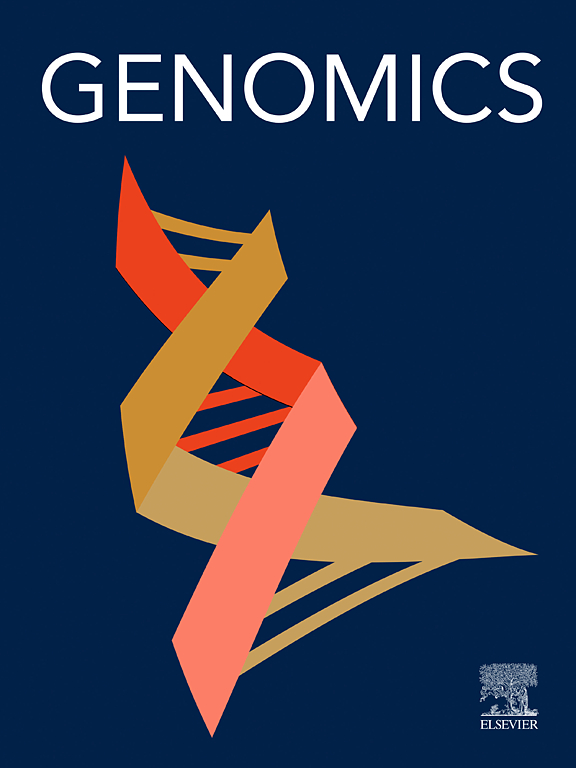bta-miR-224 通过靶向牛乳腺上皮细胞中的 FABP4 来调节乳脂代谢。
IF 3.4
2区 生物学
Q2 BIOTECHNOLOGY & APPLIED MICROBIOLOGY
引用次数: 0
摘要
乳脂由乳腺产生和分泌,主要受饮食和基因-分子网络调控。因此,了解乳脂合成的分子机制对提高牛奶质量具有重要的现实意义。脂肪酸结合蛋白 4(FABP4)是对高奶脂组和低奶脂组奶牛乳腺上皮细胞进行转录组学分析获得的与乳脂代谢密切相关的候选信使 RNA(mRNA),其表达模式和功能尚不清楚。qRT-PCR 结果显示,FABP4 在乳腺组织和高乳脂组的牛乳腺上皮细胞(BMECs)中高表达。随后,通过CCK8、EdU和流式细胞术分析了FABP4对BMECs的调控作用,结果表明FABP4抑制了BMECs的增殖和活力,促进了其凋亡。将 pEGFP-N1-FABP4 转染到 BMECs 中,FABP4 上调了乳脂标志基因 XDH、PPARG 和 ACSS2 的表达水平,并促进了甘油三酯(TGs)、胆固醇、脂滴和 β-酪蛋白的形成。利用 STRING 预测发现了 FABP4 和 PPARG 之间的强相互作用。Western印迹显示,FABP4与PPARG相互作用促进PPARG的表达,而干扰FABP4后则观察到相反的结果。microRNA(miRNA)的基因调控对脂肪酸的代谢和合成至关重要。根据网站预测并结合前期 miRNA 转录组测序结果,我们推测 FABP4 可能是 bta-miR-224 的靶基因。双荧光素酶报告基因和 qRT-PCR 的结果显示,bta-miR-224 通过靶向 FABP4 的 3'-UTR 负向调控 FABP4 的表达。通过探索 bta-miR-224 的功能,我们观察到 bta-miR-224 模拟物下调了乳脂标记基因 AGPAT6、ACSS2 和 XDH 的表达,并抑制了 TG 的合成和脂滴的分泌。然而,bta-miR-224 抑制剂则表现出相反的结果。总之,FABP4 在调节 BMEC 的增殖和分化过程中起着至关重要的作用。靶向 FABP4 的 Bta-miR-224 可通过 PPARG 促进 TG 合成和脂滴形成等生物学过程,这为从 miRNA-mRNA 角度进一步分析奶牛乳脂代谢的功能机制奠定了坚实的基础。本文章由计算机程序翻译,如有差异,请以英文原文为准。
bta-miR-224 regulates milk fat metabolism by targeting FABP4 in bovine mammary epithelial cells
Milk fat is produced and secreted by the mammary gland, which is mainly regulated by diet and gene-molecule network. Therefore, understanding the molecular mechanism of milk fat synthesis is of practical significance for improving milk quality. Fatty acid-binding protein 4 (FABP4) is a candidate messenger RNA (mRNA) closely linked to milk fat metabolism obtained from transcriptomic analysis of mammary epithelial cells of cows in the pre-existing high- and low-milk-fat groups, and its expression pattern and function are still unclear. The qRT-PCR results depicted that FABP4 was highly expressed in bovine mammary epithelial cells (BMECs) in breast tissues and the high milk fat group. Subsequently, the regulatory effects of FABP4 on BMECs were analyzed by CCK8, EdU, and flow cytometry, and the results demonstrated that FABP4 inhibited the proliferation and viability of BMECs and promoted their apoptosis. Next, the effect of FABP4 on milk lipid metabolism was explored. pEGFP-N1-FABP4 was transfected into BMECs, and FABP4 upregulated the expression levels of the milk lipid marker genes XDH, PPARG, and ACSS2, and promoted the formation of triglycerides (TGs), cholesterol, lipid droplets, and β-casein. Strong interactions between FABP4 and PPARG were identified using STRING prediction. Western blotting revealed that FABP4 interacted with PPARG to promote PPARG expression, while the opposite result was observed after interfering with FABP4. The gene regulation of microRNA (miRNA) is essential for fatty acid metabolism and synthesis. Predicted by website and combined with pre-miRNA transcriptome sequencing results, we hypothesized that FABP4 might be the target gene of bta-miR-224. The results of the dual-luciferase reporter gene and qRT-PCR revealed that bta-miR-224 negatively regulated FABP4 expression by targeting the 3′-UTR of FABP4. By exploring the function of bta-miR-224, we observed that bta-miR-224 mimics downregulated the expression of the milk fat marker genes AGPAT6, ACSS2, and XDH and inhibited TG synthesis and lipid droplet secretion. However, the bta-miR-224 inhibitor depicted the opposite results. In conclusion, FABP4 plays a crucial role in regulating BMEC proliferation and differentiation. Bta-miR-224 targeting FABP4 may promote biological processes such as TG synthesis and lipid droplet formation through PPARG, which lays a solid foundation for further analysis of the functional mechanism of milk lipid metabolism in dairy cows from a miRNA-mRNA perspective.
求助全文
通过发布文献求助,成功后即可免费获取论文全文。
去求助
来源期刊

Genomics
生物-生物工程与应用微生物
CiteScore
9.60
自引率
2.30%
发文量
260
审稿时长
60 days
期刊介绍:
Genomics is a forum for describing the development of genome-scale technologies and their application to all areas of biological investigation.
As a journal that has evolved with the field that carries its name, Genomics focuses on the development and application of cutting-edge methods, addressing fundamental questions with potential interest to a wide audience. Our aim is to publish the highest quality research and to provide authors with rapid, fair and accurate review and publication of manuscripts falling within our scope.
 求助内容:
求助内容: 应助结果提醒方式:
应助结果提醒方式:


